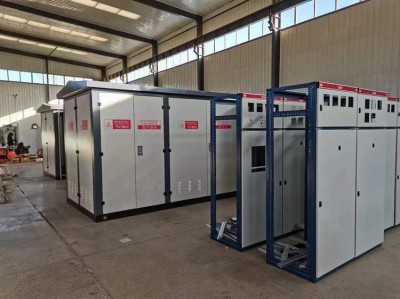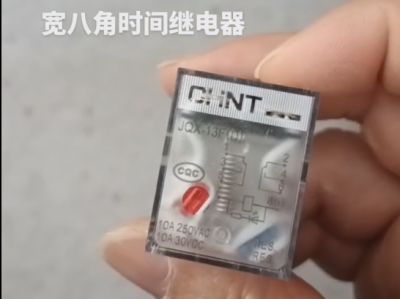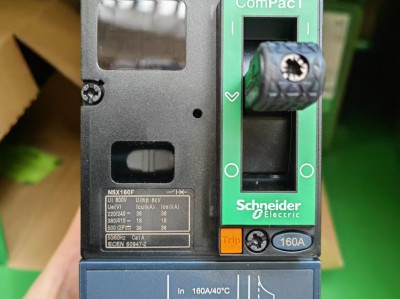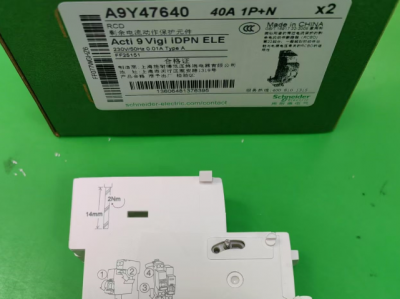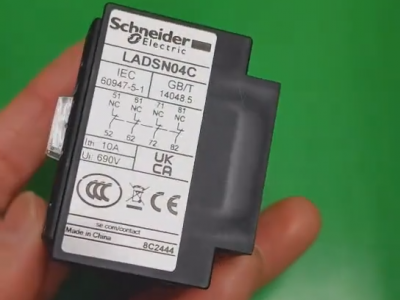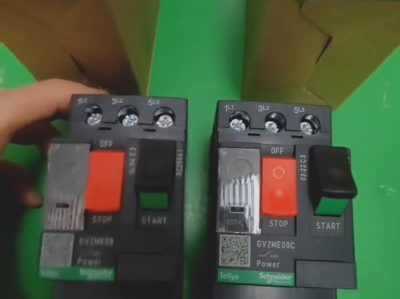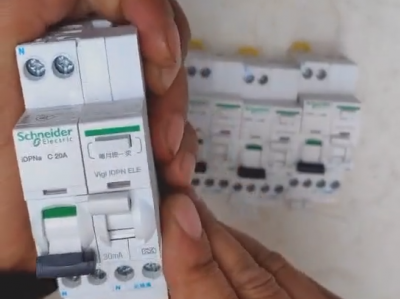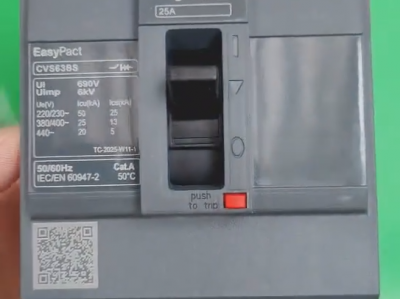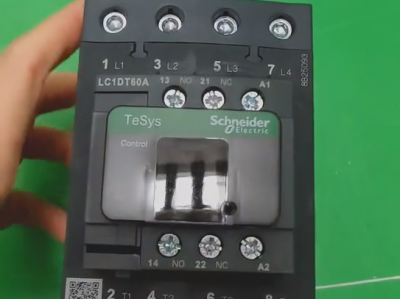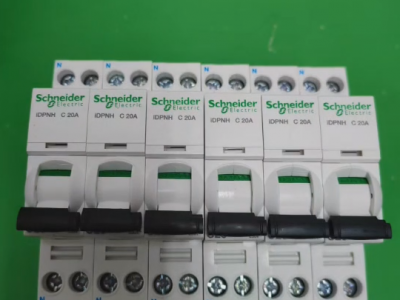Chint NXB63-C6+AX-X1 circuit breaker
Product description
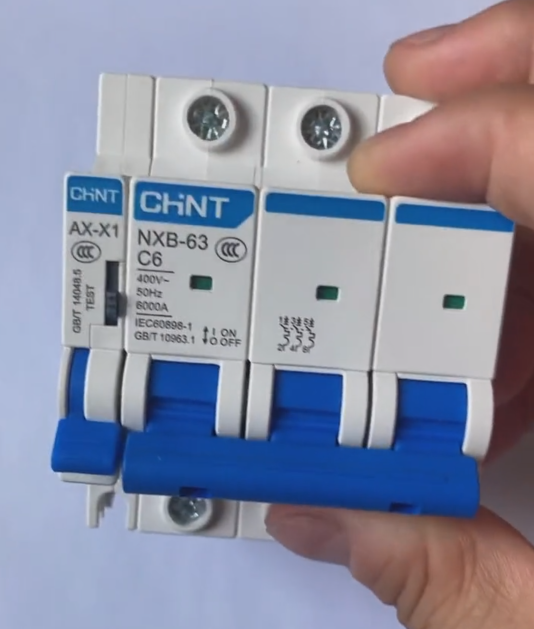
The Chint NXB63-C6+AX-X1 circuit breaker is a compact protective device suitable for low-voltage power distribution systems, composed of the NXB63-C6 circuit breaker body and the AX-X1 alarm contact accessory. Below is a detailed analysis of key information:
I. Model Analysis and Core Parameters
1. **NXB63-C6 Circuit Breaker Body*Knife Switch Fuse Core RT-3 (NT3) DC440V*
- **Series and Function**: The NXB-63 is a miniature circuit breaker (MCB) from Chint's Kunlun series, suitable for AC circuits with 50Hz/60Hz frequency and a rated voltage of 400VAC, providing overload and short-circuit protection.
- **Rated Current and Trip Characteristics**: C6 indicates a rated current of 6A, with a C-type trip curve (trip current: 5-10 times the rated current), suitable for resistive loads such as lighting and sockets.
- **Breaking Capacity**: Standard breaking capacity is 6kA, with some models reaching 10kA (e.g., NXB-63 2P C10), which should be selected based on the circuit's short-circuit current. Chint Intermediate Relay JZX-22F/4Z(D) 24VDC*
- **Pole Count and Dimensions**: Supports multiple pole counts (1P, 2P, 3P), with a width of 18mm per pole, installable on 35mm rails.
2. **AX-X1 Alarm Contact Accessory*Chint NXR series thermal overload relays price*
- **Function**: When the circuit breaker trips due to overload, short circuit, or other faults, the AX-X1 outputs alarm signals via normally open (NO)/normally closed (NC) contacts, which can be connected to monitoring systems or indicator lights. CHINT circuit breaker price*
- **Electrical Parameters**: Rated operating voltage covers 115V to 400V (AC/DC), with a contact capacity of 3A (AC230V), compatible with various control circuits.
- **Installation Method**: Directly pluggable on the right side of the circuit breaker, removable without tools, and does not affect the main breaker's function.
II. Application Scenarios and Selection Recommendations
1. **Typical Applications**
- **Residential and Commercial Power Distribution**: Used for lighting circuits (6A loads), small appliance sockets, etc., with AX-X1 for fault warning.
- **Industrial Control**: As branch circuit protection in automated equipment, combined with AX-X1 signals for remote monitoring.
- **New Energy Fields**: Suitable for the output side of photovoltaic inverters (DC compatibility must be confirmed), but models explicitly marked with DC parameters are preferred.
2. **Key Selection Criteria**
- **Current Matching**: Select the rated current based on the load current (e.g., 6A corresponds to ≤1.32kW loads) to avoid false tripping due to overload.
- **Breaking Capacity**: Must be greater than the circuit's expected short-circuit current (e.g., typically 6kA for residential distribution; 10kA models for high short-circuit risk scenarios like industrial use).
- **Accessory Compatibility**: AX-X1 is only suitable for the NXB-63 series; other series (e.g., DZ47) require corresponding accessories (e.g., AX-01).
III. Installation and Usage Precautions
1. **Mechanical Installation**
- **Rail Mounting**: The circuit breaker must be vertically installed on a standard 35mm rail, ensuring the卡扣 (clips) are fully engaged to prevent looseness.
- **Wiring Requirements**: The incoming end connects to the power supply side, and the outgoing end connects to the load side. The wire cross-sectional area must match the current (1.5mm² is recommended for 6A).
- **Accessory Installation**: AX-X1 should be inserted into the right-side slot with the circuit breaker in the closed state, ensuring contact alignment, and checked for stability after installation.
2. **Electrical Connections**
- **Voltage Matching**: The circuit breaker's rated voltage is 400VAC; it is strictly prohibited for DC systems like DC440V (special DC circuit breakers must be selected for photovoltaic combiner boxes).
- **Alarm Signal Circuit**: AX-X1 contacts must be connected in series to the alarm circuit (e.g., indicator lights or PLC input modules) to ensure reliable signal transmission.
3. **Environmental Conditions**
- **Temperature Range**: -5°C to 40°C (long-term), with short-term tolerance up to -35°C to 70°C. Derate the current in high-temperature environments (reduce current by 5% for every 10°C increase).
- **Altitude Limit**: ≤2000 meters. Special models or derating are required for high-altitude areas (insulation strength decreases by 8% for every 1000 meters increase).
IV. Certification and Compliance
1. **Domestic Certification**
- Certified by China CCC (Certificate No. 2020980307001645), compliant with GB 10963.1 standards, suitable for the domestic market.
- The packaging and product body bear CCC marks, model numbers, rated parameters, etc., which can be verified for authenticity on Chint's official website.
2. **International Market Adaptation**
- **North American Market**: Not UL-certified; compatible models (e.g., Siemens 5SJ6 series) or customized versions must be selected.
- **European Market**: No CE certification; products compliant with EN 60898 standards (e.g., ABB iC65) are recommended.
V. Maintenance and Fault Handling
1. **Routine Maintenance**
- **Regular Inspections**: Check for contact oxidation and loose terminals every 6 months, and clean surface dust.
- **Function Testing**: Simulate overload tripping via the test button annually to verify the circuit breaker's normal operation.
2. **Fault Troubleshooting**
- **Frequent Tripping**: Check if the load exceeds the rated current, if there is a short circuit, or if the circuit breaker is aged and needs replacement.
- **Abnormal Alarm Signals**: Inspect for poor contact in AX-X1 or wiring breaks, and replace the accessory if necessary.
VI. Alternative Solutions and Emergency Procurement
1. **Equivalent Models**
- **Domestic Alternatives**: Delixi CDB6-63 C6, Tianzheng TGB1-63 C6 (ensure matching pole count and breaking capacity).
- **Imported Alternatives**: Schneider C65N C6, ABB S201-C6 (note installation dimensions; some are 17.5mm per pole).
2. **Emergency Handling**
- If AX-X1 is out of stock, temporarily use auxiliary contacts (e.g., AX-01) as a substitute, but manual reset of alarm signals is required.
- In case of circuit breaker body failure, temporarily use a same-specification fuse (e.g., RT16-3 NT3 6A) as a transition, but replace it as soon as possible.
VII. Procurement and After-Sales Service
1. **Channel Selection**
- **International**: Procure via agents (WhatsApp: +86-13811255435), and confirm delivery lead times in advance.
2. **Technical Support**
- Technical hotline (WhatsApp: +86-13811255435) for inquiries on parameter matching and installation guidance.
- For bulk purchases, request type test reports (e.g., short-circuit breaking test data) from suppliers.
Summary: Procurement Decision Checklist
| Inspection Item | Compliance Criteria |
| Model Identification | Circuit breaker: NXB63-C6; Accessory: AX-X1, with clear parameters and CCC marks on both body and accessory |
| Breaking Capacity | ≥ Circuit's expected short-circuit current (e.g., 6kA for residential, 10kA for industrial) |
| Accessory Compatibility | AX-X1 clips match the right-side slot of the circuit breaker, with aligned and secure contacts |
| Certification Marks | Domestic: CCC; Export: Additional UL/CE certification required |
| Packaging and Transportation | Original factory sealed packaging, shock-proof foam, and logistics providers qualified for electronic component transportation |
Through the above analysis, the NXB63-C6+AX-X1 combination effectively meets the protection and monitoring needs of low-voltage power distribution systems. Strictly verify parameters and certifications during procurement to ensure system reliability.
The Chint NXB63-C6+AX-X1 circuit breaker is a Miniature Circuit Breaker (MCB) commonly used in low-voltage power distribution systems, providing overload and short-circuit protection. The "+AX-X1" likely indicates the inclusion of auxiliary contact (AX) accessories. Below is a general guide to its installation method and precautions (always refer to the product manual for specifics):
I. Pre-Installation Preparation
1. **Confirm Product Specifications**
- Ensure the circuit breaker model matches requirements (C6 denotes a rated current of 6A, suitable for low-current circuits like lighting).
- The AX-X1 accessory is typically an auxiliary contact for remote signal feedback (e.g., connecting to alarm or control systems); verify its function and wiring method.
2. **Tools and Materials**
- Tools needed: Screwdriver ( Phillips or flathead), wire stripper, multimeter, rail installation tool (if required).
- Materials: Standard 35mm DIN rail (for mounting the circuit breaker), wires (selected by load current rating).
3. **Safety Power Disconnection**
- Always disconnect the upstream power supply before installation to ensure the circuit is de-energized and avoid electric shock hazards.
II. Installation Steps
1. Rail Mounting (Main Circuit Breaker)
- **Rail Type**: Use a standard 35mm DIN rail (common in distribution panels).
- **Mounting Method**:
1. Align the clips at the bottom of the circuit breaker with the rail, press down firmly until a "click" is heard to confirm secure attachment.
2. To remove, use a screwdriver or specialized tool to press the clip on the side of the circuit breaker and pull upward.
2. Accessory Installation (AX-X1 Auxiliary Contact)
- **Installation Location**: Auxiliary contacts are typically mounted on the right side of the main circuit breaker (some models may support left or rear mounting; refer to the manual).
- **Mounting Method**:
1. Align the卡槽 (slots) of the auxiliary contact with the interface of the main circuit breaker, push horizontally to fix (may require screws or clips for locking).
2. Ensure the accessory is tightly connected to the main circuit breaker without looseness.
3. Wiring Operations
- **Main Circuit Wiring (Circuit Breaker Body)**:
- **Incoming Terminals (Top)**: Connect to the power supply side (usually live wire L and neutral wire N; note that the neutral wire may need to be connected via a terminal block, depending on whether the circuit breaker has a neutral terminal).
- **Outgoing Terminals (Bottom)**: Connect to the load side (e.g., lamps, sockets).
- **Precautions**:
- Wire cross-sectional area should match the current (1.5mm² or 2.5mm² copper wire is recommended for 6A current).
- Strip wires to an appropriate length to avoid short circuits; ensure terminal screws are tightened securely.
- **Accessory Wiring (AX-X1 Auxiliary Contact)**:
- Auxiliary contacts typically have 2-4 terminals (e.g., NO normally open, NC normally closed) for connecting control circuits (e.g., to energy meters, alarm systems, or PLCs).
- Connect wires to the corresponding terminals as needed (marked such as "1-2" for normally open, "3-4" for normally closed), and tighten the screws.
III. Post-Installation Inspection and Testing
1. **Visual Inspection**
- Confirm the circuit breaker and accessories are firmly installed without tilting or looseness; ensure no exposed copper wires and tight terminal screws.
2. **Function Testing**
- Close the upstream power supply and check if the circuit breaker indicator (if available) is normal.
- Manually switch the circuit breaker on and off to test smooth operation and whether auxiliary contacts actuate synchronously (use a multimeter to measure contact continuity).
- Simulate overload or short-circuit conditions (exercise caution) to test if the circuit breaker trips promptly for protection.
3. **Safety Verification**
- Use a multimeter to measure line insulation resistance to ensure no grounding or short-circuit faults.
- Check that the distribution panel is reliably grounded and complies with electrical installation codes.
IV. Precautions
1. **Polarity and Neutral Handling**
- Single-pole circuit breakers (1P) usually connect only the live wire; the neutral wire must be connected via the distribution panel's neutral terminal block. For 1P+N circuit breakers, distinguish the incoming direction of the live wire (L) and neutral wire (N) (the N terminal is typically a fixed hole and not interruptible).
2. **Environmental Requirements**
- Install in dry, ventilated areas free of corrosive gases, avoiding high-temperature or humid environments.
- Leave sufficient space in the distribution panel to ensure good heat dissipation.
3. **Professional Operation**
- If unfamiliar with electrical installation, consult a licensed electrician to ensure compliance with local electrical codes (e.g., China's GB standards).
We hope this information helps! Always prioritize safety and follow proper procedures during installation.

